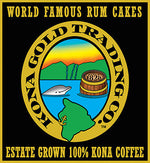A significant part of our ethos here at Buddha’s Cup is maintaining the integrity and ethics of growing great-tasting coffee. We specialize in growing and roasting 100% pure Kona Coffee with biodynamic farming methods. These practices support a healthy planet, a synergistic ecosystem, and vibrant coffee that boasts a full-bodied flavor.
In this article, we are going to dive into our coffee processing methods, including washed and natural coffee beans. Keep reading for a deeper insight into how we create our roasts here at Buddha’s Sanctuary LLC!
Washed Coffee Beans: The Wet Process
Coffee cherries are complex fruit with multiple layers, including pulp, mucilage, parchment, silverskin, and bean. Washed coffee beans, also known as the wet process, allow coffee producers to remove the outer hull of the coffee cherries, eventually revealing the green bean that’s ready for roasting after many meticulous steps!
While the wet process can be time-intensive, it also has a multitude of flavor benefits. Washed coffee beans are known for having a vibrant, bold flavor that’s fresh and bright. They are also minimally exposed to the coffee fruits sugars by the time they reach the roasting process.
Since coffee cherries are very sensitive to fermentation, the wet process requires a tight set of guidelines the producer must follow, while maintaining a watchful eye on the beans through each processing step. Washed coffee cherries are run through water, fermented, and dried out for the roasting process.
Breakdown of Washed Coffee Beans Processing Method:
- Flotation
- Depulping
- Fermenting - with or without yeast 12 – 36 hours
- Washing
- Sun-drying – two weeks on average
- Dehulling – after ‘aging’ 2 – 3 months
The Benefits of The Wet Process
- Washed coffee only makes up about 20% of the coffee industry and is often seen as a luxury, higher-quality coffee product.
- Produces a vibrant and bright flavor that’s easily identified, without any muddy undertones.
- Some people believe washed coffee is cleaner processing for producing highly controlled, untainted coffee grounds that maintain their flavor.
Natural Coffee Beans: The Dry Process
The natural process is one of the most popular coffee processing methods. Compared to the wet process, this method exposes coffee to its sugars for long periods of time. Sometimes it can be difficult for coffee producers to monitor and guarantee a continuous flavor throughout all of the coffee beans when using this method. Although the beans are sometimes inconsistent, skilled coffee growers are able to produce a brilliant final product.
Natural coffee beans are left to dry in the sun after picking. They are fermented while drying, constantly being rotated by the producer to maintain even results. After 30 days on average, they will be at peak low moisture content between 9 to 12% and ready for dehulling. The coffee producer will remove the hull to prepare the green coffee bean for roasting.
Breakdown of Natural Coffee Beans Processing Method:
- Sorting
- Drying
- Dehulling
The Benefits of The Dry Process
- Produces a very full-bodied flavor for a bold drinking experience.
- Appeals to so-called ‘non’ coffee drinkers for a sweeter taste.
- An eco-sustainable coffee process that requires minimal equipment but is more labor intensive.
At Buddha’s Sanctuary LLC, we use the washed coffee bean and natural coffee bean processes to achieve a variety of flavor profiles for all our roasts. One last important step at our farms is ‘aging’ all our green beans for up to 6 months before roasting. Just like a fine wine, aged in a temperature-controlled environment, this produces an even more complex cup of coffee to enjoy! With great care, we are committed to the craft of producing great tasting – Estate Grown 100% Kona coffee, without sacrificing environmental practices. All labor intensive but what we love to do best! Shop our award-winning coffee blends today!













